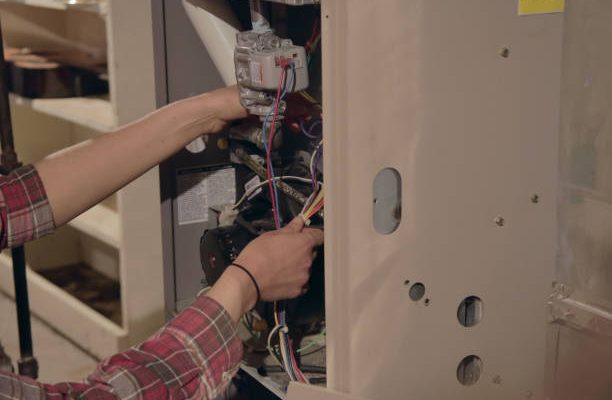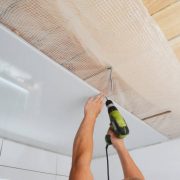Your home’s furnace is a critical component of your comfort during the cold winter months. It keeps you warm and cozy when the temperatures drop outside. However, like any other mechanical system, furnaces can experience problems and breakdowns. While some minor issues can be resolved with a bit of DIY troubleshooting, there are times when it’s best to call in professional furnace repair services. In this comprehensive guide to furnace repairs, we’ll walk you through common furnace problems, when to attempt a DIY fix, and when to reach out to a certified technician for help.
Common Furnace Problems
Before we delve into when to call a professional, let’s familiarize ourselves with some common furnace issues you might encounter:
1. No Heat
Imagine waking up on a chilly winter morning, only to find that your furnace isn’t producing any heat. This is a clear sign that something is amiss. It could be due to a faulty thermostat, a malfunctioning pilot light, or a more complex issue within the furnace
2. Insufficient Heat
If your furnace is running but not providing enough warmth to keep your home comfortable, it might be struggling with problems like clogged filters, a malfunctioning blower motor, or inadequate fuel supply.
3. Strange Noises
Unusual sounds coming from your furnace can be unsettling. Common noises include banging, rattling, squealing, or popping. These sounds can signal various issues, such as loose components, a worn-out belt, or a failing blower motor.
4. Frequent Cycling
Furnaces should run in cycles to maintain a consistent temperature. If your furnace is cycling on and off too frequently, it might be due to a faulty thermostat, improper airflow, or a dirty filter.
5. High Energy Bills
A sudden spike in your energy bills, especially during the heating season, could indicate that your furnace is not operating efficiently. This may be caused by a range of issues, from a dirty filter to a malfunctioning thermostat.
When to Call a Professional
Here are some scenarios in which you should definitely reach out to a certified technician:
1. No Improvement After DIY Attempts
If you’ve attempted the DIY troubleshooting steps and your furnace still isn’t working correctly, it’s time to call a pro. Continuing to tinker with the system without the right expertise can lead to further damage and higher repair costs.
2. Gas Leaks
If you suspect a gas leak in your furnace, shut off the gas supply immediately and leave your home. Gas leaks are extremely dangerous and should be addressed by a professional technician who can safely inspect and repair the issue.
3. Electrical Problems
Furnaces involve complex electrical components. If you experience electrical issues, such as sparks, exposed wires, or a burning smell, do not attempt to fix them yourself. Call a professional electrician or HVAC technician to assess and repair the problem.
4. Carbon Monoxide (CO) Alarm Activation
The presence of carbon monoxide in your home is life-threatening. If your CO alarm goes off or you suspect a CO leak, evacuate your home immediately and contact emergency services. Once it’s safe, have a technician inspect your furnace and ventilation system for CO leaks.
5. Unusual Odors
Furnaces can emit odors, especially when first turned on after a long period of inactivity. However, if you notice persistent or foul-smelling odors, like a burning smell or a strong metallic scent, it’s time to call a professional. These odors could indicate a serious issue, such as overheating or a malfunctioning heat exchanger.
6. Age and Lack of Maintenance
Older furnaces are more prone to breakdowns and efficiency issues. If your furnace is nearing the end of its expected lifespan and hasn’t been well-maintained, it’s a good idea to have a professional inspect it for potential problems and advise on replacement options.
7. Complex Repairs
Certain furnace repairs, such as those involving the heat exchanger, blower motor, or gas valve, are complex and require specialized knowledge and tools. These repairs should only be performed by experienced HVAC technicians.
Choosing the Right Professional
When it’s time to call in a professional for your furnace repair, it’s crucial to choose the right technician or company. Here are some tips to help you make an informed decision:
1. Licensing and Certification
Ensure that the technician or company is licensed and certified. These credentials demonstrate their expertise and commitment to quality service.
2. Experience and Reputation
Look for technicians or companies with a proven track record in furnace repair. Read reviews, ask for recommendations from friends and family, and check their online presence.
3. Estimates and Quotes
Request written estimates or quotes for the repair work. Compare these quotes and consider the scope of work, parts, and labor costs before making a decision.
4. Warranty and Guarantees
Inquire about warranties and guarantees on both the parts and labor. Reputable technicians or companies should stand behind their work.
5. Emergency Services
Choose a technician or company that offers emergency services, especially if you’re experiencing a furnace breakdown during extreme weather conditions.
6. Communication
Effective communication is key. A reliable technician or company should be responsive to your inquiries, provide clear explanations of the issues, and keep you informed throughout the repair process.
Preventive Maintenance
While knowing when to call a professional for furnace repairs is essential, it’s equally important to prevent problems from occurring in the first place. Regular preventive maintenance can extend your furnace’s lifespan and improve its efficiency. Here are some steps you can take:
1. Schedule Annual Inspections
Arrange for an annual furnace inspection by a qualified technician. They can identify and address potential issues before they become major problems.
2. Replace Filters Regularly
Follow the manufacturer’s recommendations for filter replacement. This simple task can significantly improve airflow and reduce strain on your furnace.
3. Clean and Clear Vents and Ducts
Keep air vents and ducts clean and unobstructed to ensure proper airflow. Periodically inspect these areas for dust, debris, or blockages.
4. Lubricate Moving Parts
As part of your annual maintenance, ask the technician to lubricate moving parts to reduce friction and extend their lifespan.
5. Check the Thermostat
Regularly check and calibrate your thermostat to ensure accurate temperature control.
6. Install a Carbon Monoxide Detector
For added safety, install a carbon monoxide detector in your home. This device can alert you to potential CO leaks.
Conclusion
Your furnace plays a crucial role in keeping your home warm and comfortable during the cold months. While some furnace issues can be resolved through DIY troubleshooting, knowing when to call a professional is equally important. Safety, the complexity of the problem, and your comfort should guide your decision. By following the tips in this comprehensive guide, you can ensure that your furnace remains in good working condition and ready to keep you cozy all winter long. Remember that regular maintenance and quick action when needed will help you avoid costly repairs and ensure your furnace’s longevity.





















With how old our furnace is, I can definitely see why professional inspections would be important. If we don’t check on that appliance every now and then, it could lead to a major breakdown that can pose a huge fire risk to our home. I’ll take your advice and call over a professional from the area for some regular inspections from now on.